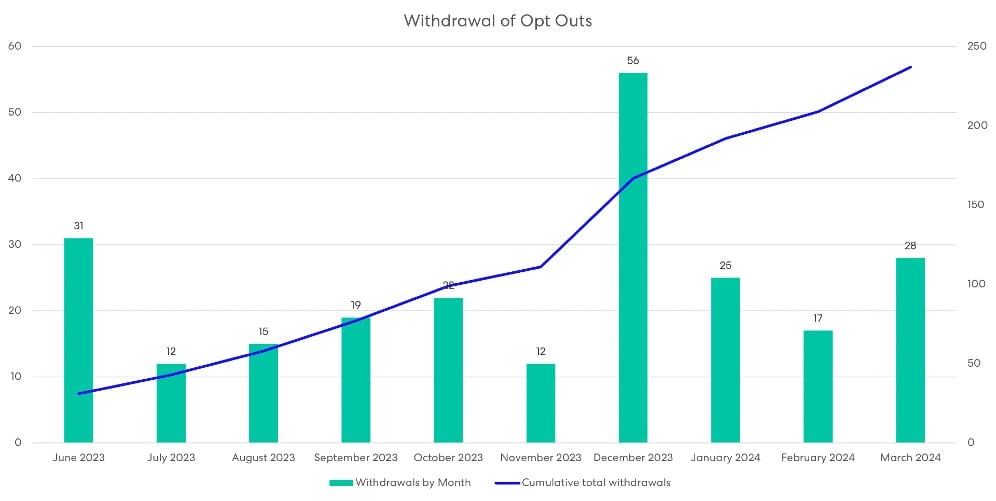"These early decisions reinforce the critical importance of strict compliance with the requirements of the relevant legislation and rules, to ensure the validity of opt outs and withdrawal of opt outs."
As most readers will be aware, it is possible to opt European patents and patent applications out of the jurisdiction of the Unified Patent Court. By opting out of the UPC's jurisdiction, the proprietor can protect their European patent from the risk of central revocation of the patent (i.e. loss of patent rights in all the states that participate in the UPC system).

Opt outs
Opting out has proved popular with patent proprietors. The UPC reports that a total of 418,095 applications to opt out were received in the three month "sunrise period" before the court came into effect on 1 June 2023, and a significant number of European patents and patent applications are still being opted out each month, as patentees opt out newly granted or published applications and cases that were missed during the sunrise period, as shown in the chart to the side.

Withdrawing opt outs
It is also possible to withdraw an opt out, which may happen when patent proprietor is preparing to enforce their patent in the UPC. If you are concerned about a possible UPC infringement action against you, it's a good idea to monitor the opt out status of the relevant patent. If the opt out for the patent is withdrawn you'll know that you need to accelerate preparations to defend yourself.
The chart to the side shows the number of applications to withdraw opt outs that have been lodged since the UPC opened its doors.
What are the rules?
The rules around opting out and withdrawing opt outs are far from straightforward, and; the process is fraught with danger for the unwary. Some of these dangers are illustrated by early decisions of the UPC.
- For an opt out of a patent to be effective, it must be registered; before; any action in respect of that patent is commenced at the UPC. If an action is brought in the UPC before a patent is opted out, it is no longer possible to opt that patent out of the UPC's jurisdiction.
This was confirmed in the case of Cup&Cino vs Alpina Coffee Systems, where the UPC's Vienna Local Division confirmed that an (apparently unauthorised) opt out filed for Cup&Cino's European patent after an application for a preliminary injunction had been filed at the UPC was invalid.
- An opt out can only be withdrawn if; no proceedings; have been brought in respect of the relevant patent in the national courts.
In the case of AIM Sport Vision vs. Supponer, the Helsinki Local Division of the UPC held that AIM Sport's withdrawal of the opt out of its European patent was ineffective, because it was performed after infringement and invalidity proceedings were initiated at the German national courts, even though those proceedings were brought before the UPC came into effect. The effect of this is that AIM Sport Vision is now locked out of the UPC for this patent. Any future action for infringement of this patent will have to be brought in the national courts of the European states in which the patent is effective, at considerably greater expense than a single action in the UPC.
- An application to opt out a European patent must be made by; all; the proprietors of the patent for all the European states in which it has effect.
In the case of Toyota Motor Europe vs Neo Wireless, an opt out application was filed naming the applicant for the patent as the proprietor of the patent, but omitting to name a German affiliate of the patent application to which the German national validation had been assigned. As the application to opt out was not lodged by all the patent proprietors in this case, the Paris Central Division held that the opt out was invalid, meaning that the validity of the patent can be challenged in the UPC, possibly leading to central revocation.
These early decisions reinforce the critical importance of strict compliance with the requirements of the relevant legislation and rules, to ensure the validity of opt outs and withdrawal of opt outs.
Data source: UPC Case Management System
The content of this article is intended to provide a general guide to the subject matter. Specialist advice should be sought about your specific circumstances.

